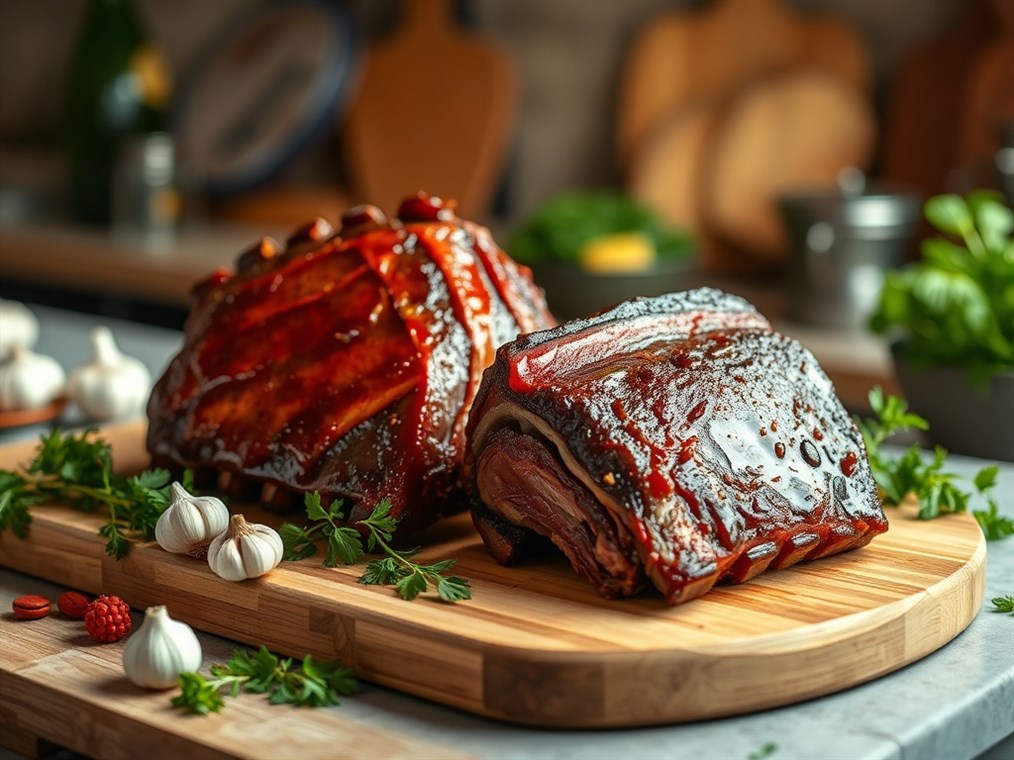Back Ribs or Short Ribs: Can You Swap ‘Em? Let’s Get Real.
So, you’re staring down a recipe calling for ribs, and suddenly you’re wondering: can I actually use these ribs instead of those ribs? Happens to the best of us! When it comes to beef ribs, back ribs and short ribs are the usual suspects, and yeah, you can often swap them. But hold on a sec – it’s not a one-to-one thing. There are a few key differences you need to know to avoid a culinary oops.
Think of it this way: both cuts come from the rib area, but they’re totally different neighborhoods.
- Where They Come From: Back ribs? Those are the ones cut from the upper back, near where you get those glorious ribeye steaks. Basically, after they carve out the fancy stuff, what’s left clinging to the bones are the back ribs. Short ribs, on the other hand, hang out lower on the rib cage, closer to the front of the cow.
- Meat, Glorious Meat: Here’s the biggie. Back ribs are kinda skimpy on the meat – you’re picking between the bones, mostly. Short ribs? Now those are meaty. You get a nice, thick layer of beef sitting right on top.
- Fat is Flavor (and Moisture!): Short ribs are the winners here, hands down. They’re marbled with fat, sometimes with a whole cap of it on top. Back ribs are leaner, so you gotta watch ’em.
- Size Matters: Back ribs are long and dramatic – picture those Flintstones ribs. Short ribs are, well, shorter. They come in different shapes and sizes, depending on how the butcher cuts them. You’ve got the chunky English cut, or the thin, quick-cooking flanken cut.
Okay, I Get It. So How Do I Swap ‘Em?
Alright, so you’re thinking of making the switch. Here’s the deal:
- Fat, Fat, Baby: Because back ribs are leaner, you might need to add some extra fat to your recipe, especially if you’re braising. A little olive oil or butter can go a long way to keep things juicy. Trust me, nobody wants dry ribs.
- Meat Placement: Remember, the meat’s in different spots. This might change your cooking time a bit. Keep an eye on things and adjust as needed.
- Cut Counts: Short ribs come in different cuts, like Flanken cut, English cut, and others. Depending on the recipe, the cut of the ribs may affect cooking times.
Cooking ‘Em Up Right
Both back ribs and short ribs are begging for low and slow cooking. We’re talking methods that melt all that connective tissue into pure deliciousness.
- Braising: This is your best friend. Simmer those ribs in liquid until they’re fall-apart tender. Red wine, beef broth, even beer – go wild!
- BBQ/Smoking: Oh yeah. Both ribs can handle the smoke, but those back ribs need extra love to keep from drying out.
- Grilling: Grilling works, but go for indirect heat. You don’t want to char the outside before the inside is cooked.
No Ribs? No Problem!
Sometimes, you just can’t find the ribs you need. Don’t panic! Here are a few stand-ins:
- Beef plate short ribs: These are a great option, offering a similar flavor profile.
- Beef spare ribs: Another suitable replacement for short ribs.
- Beef shank: This cut provides a succulent flavor and tender texture when cooked properly.
- Beef flanken ribs: These thinner ribs cook quickly and offer good flavor.
- Pork ribs: A tasty and often more affordable alternative.
- Brisket: A tough cut that becomes tender with slow cooking, offering a similar result to short ribs.
- Chuck roast: Can be used in braised dishes as a substitute for short ribs.
The Bottom Line
Swapping back ribs for short ribs (or vice versa) is totally doable. Just remember the fat thing, keep an eye on cooking times, and you’ll be golden. Now get out there and get cooking!

